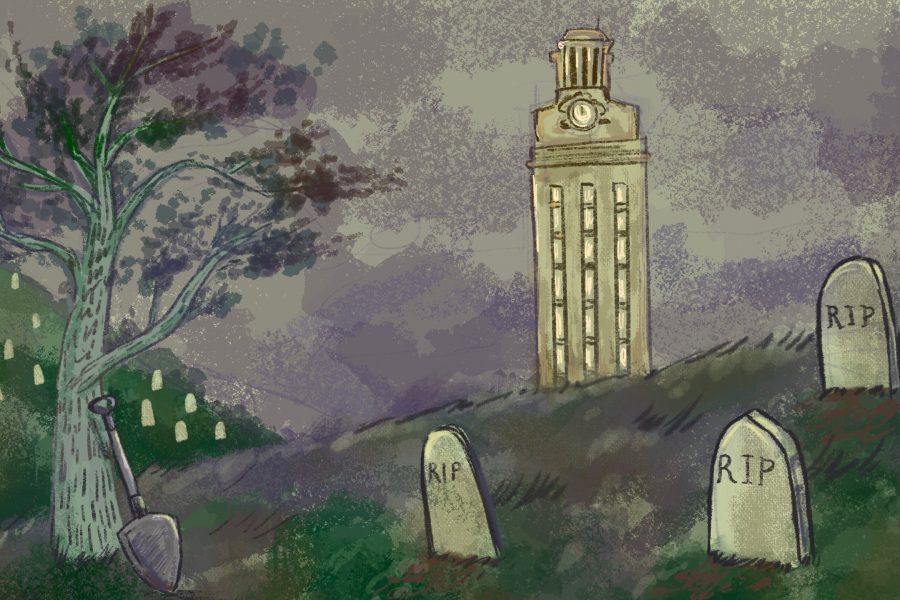UT, please don’t sacrifice us to the pandemic.
At the end of June, UT released a detailed list of “triggers” that would cause the school to take action to further protect students from COVID-19, such as moving classes fully online again. The list ranges from significant action by the governor to the inability to adequately test for COVID-19 on campus. Most notably, however, “student death” was listed as a consideration.
Our community has so much more life to live. Whether you’re an 18-year-old freshman or a 70-year-old professor — you deserve to live. We all deserve to survive this pandemic.
The UT administration needs to reassess its plans for reopening campus as well as the triggers that would cause the school to take action.
“If that’s even something that needs to be discussed then it should be obvious what to do,” mathematics junior Andy Heineman said. “If a student could die from UT’s policy, then that policy shouldn’t be in place.”
Unfortunately, the worst thing that could happen already did. In early July, UT Interim President Jay Hartzell announced that a UT custodian died from complications related to COVID-19.
That shouldn’t have happened in the first place, and now, it should be treated as a warning sign and motivate the school to move fully online this fall.
Yet, that’s not what’s happening. UT laid out a six-phase plan to describe the levels of campus reopening. Phase or “Level” 0 is what campus was in January of this year: no pandemic in sight or mind. Level 5 is what campus was in April: all students sent home to take their classes online.
Right now, school officials consider UT to be at Level 3, or a hybrid model of instruction and open campus facilities, even though UT-Austin has the most reported coronavirus cases of all universities in the United States.
University spokesperson J.B. Bird said a variety of factors will play a role in moving the school to different phases.
“This is a dynamic situation,” Bird said. “There is not one single factor that would cause the University to take a set action. It’s really a combination of factors that will be evaluated as the situation progresses.”
UT’s policy makes it difficult to hold the school accountable. If UT does not establish a set of case number benchmarks that would trigger action, we cannot know when the school will decide to move to a different phase.
The policy also means that a student or faculty member’s death is not grounds for immediate action.
“It’s terrible to have had a death in our community, but statistically, it’s not realistic to think no one will die in Travis County over the next six months,” Bird said. “We’ve had 250 deaths, and there, unfortunately, probably will be additional deaths in the county. The fact that it took so long for a member of our UT community to die is a blessing for us. We’re grateful for that while we mourn the loss of the custodian.”
We should not diminish the death of someone in our community to a statistic, nor should we normalize future deaths. UT has the opportunity to protect its students and staff members from adding to the nearly 150,000 COVID-19 deaths in the United States.
UT has the opportunity to create a detailed plan for closing the school in response to the novel coronavirus. The administration owes the community an active response in the event that the virus takes over campus.
We deserve more. We deserve to get an education without worrying the next day could be our last. We should not be reduced to statistics in Travis County’s records. We need UT to put its community members first, even if that means closing campus for another semester.
Kielty is a government and sociology junior from Concord, Massachusetts.





















